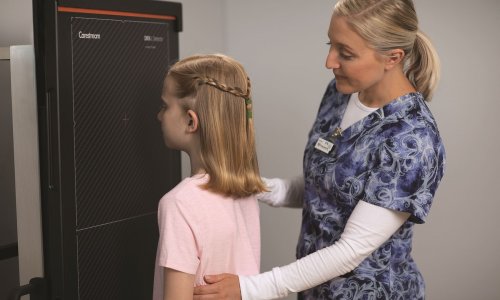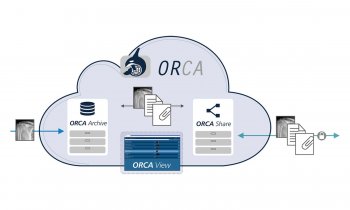The first Carestream Cardiology PACS in Europe
European Hospital asked Cardiologist Eric P. Viergever about the installation and its impact on the department’s work since its inception
In the historical city of Gouda, in the Netherlands, the 441-bed Groene Hart Ziekenhuis (Green Heart Medical Centre) employs about 150 doctors and serves a local population of 450,000 people. Last September it became the first hospital in Europe to install the new Carestream Cardiology PACS. Launched in 2009, the PACS provides a single integrated platform for diagnosis, reporting, storage and review, creating a closed-loop information cycle.

Prior to the arrival of the Carestream Cardiology PACS at Groene Hart Ziekenhuis, the two echocardiography systems ran throughout each day, generating huge amounts of echoes. Also the angios and stress tests had to be edited using separate programmes. ‘In the end, in our out-patient clinic we were running up to seven programmes simultaneously, to gather all the information on one patient,’ recalled cardiologist Eric Viergever. ‘It was very inconvenient.’
The team wanted one package using one programme to archive and edit all the patients’ data, and connected to the hospital information system (HIS). ‘We found it with Carestream Health,’ said Dr Viergever. ‘Actually, it was the only available software that really was integration ready. None of the other vendors had it running the way Carestream did. This was convenient because our radiology department already had the Carestream Radiology PACS running, so we could realise our wishes with a relatively small investment. Integration with the HIS and Radiology PACS was guaranteed, and the radiologists were satisfied with the way Carestream had supported them – to us, very important considerations.’
Having travelled to a USA hospital to see a Carestream system in operation and discuss its use with the users, Dr Viergever said: ‘They were satisfied and it looked really integrated. We saw what our solution had to be.’
At Groene Hart, the echo and coronary angiograms were the first to be integrated with the Carestream PACS.
Synchronising with the HIS the new PACS takes all of a patient’s data from the central database using the patient’s ID number, and duplicates this across every record or entry made about that patient.
‘When using the HIS, I can look into the report generated by the Carestream PACS; I can look at preliminary or simplified echo, for example. But I cannot, when using the HIS, do any reporting on the echo. For that I have to go back to the Carestream system. But whatever I do in the Carestream system is regularly reported into the HIS.’ This can be accessed by all those involved in the hospital and working beyond – e.g. general practitioners (GPs). However, he added: ‘At home I can access hospital data via the normal internet but not the Carestream system, although the data is easy to access, there’s a very large firewall that prevents such access.’ Whereas it’s possible to work with the system in this way in countries such as the USA, the Netherlands does not allow patient data to be transmitted via a public network. So, in the absence of a national imaging network, medical data must be transferred via a separate network or as encrypted data. Thus, to work at home, Dr Viergever has access to the Carestream Cardiology PACS for viewing only.
Dr Viergever recalled how ultrasound and cath lab records were stored in analogue form on VHS and CD, which necessitated manual, time-consuming searches for patient records. ‘Now I can look into an echo performed a year before and simultaneously compare it with the new echo, for example, in a heart failure patient . This was impossible with videotapes. It’s very convenient if I have, say a oncology patient, to be able to report to the echo system immediately. Before the Carestream system, I had to look at the echo, and the patient would return for the results after a few weeks. Now I get results in an hour, which improves output and convenience for everyone involved. Now I don’t need a transcription; it’s all been reported; or, if one needs doing, I can report in about two minutes. So our whole practice and patient logistics have changed.’
‘A few things are very difficult to do,’ he explained. ‘The system is running right from the moment it’s bought, but to get everything working properly with it takes time. But Carestream makes their guarantee true. The DICOM connection means the systems can talk with one another and provide adequate coupling of all the imaging modalities involved.
30.08.2010
- data management (585)
- display (438)
- interoperability (70)
- PACS (176)
- telemedicine (273)
- teleradiology (87)











